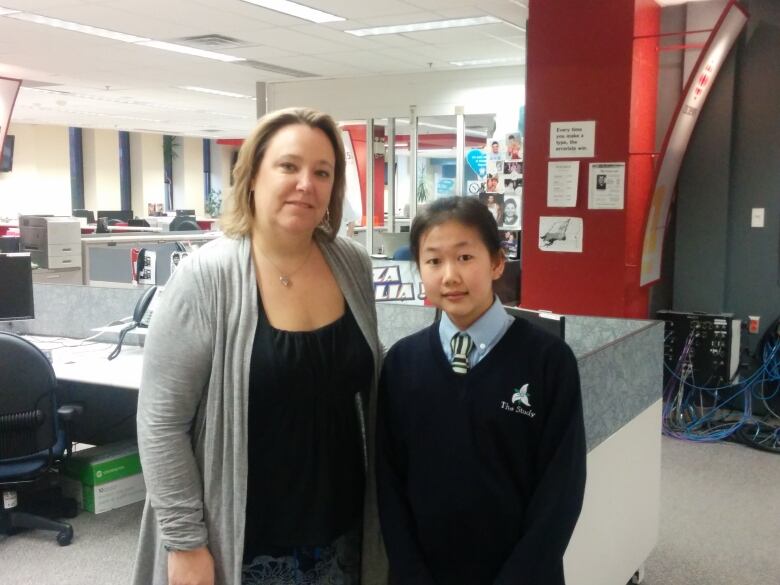Montreal teen makes major discovery in relapsed lymphoma patients
'What she's done is just incredible. It's incredible, truly,' says McGill University researcher

Scientists are now closer to understanding why some lymphoma patients relapse afterundergoing chemotherapy all thanks to a 16-year-old Montrealer.
Melissa Lu, a student at the all-girls schoolThe Study, identified a common gene found in people diagnosed with Non-Hodgkin's lymphoma and who do not respond to traditional therapy.
Lu then wanted to find out if that the specific gene, known as the RASGRP4, alsoproduced mutated proteins.
And she did.
"I used an inhibitor to target part of the pathway and block it and found that the mutatedcells were more sensitive than the non-mutated cells," Lu told CBC Montreal's Daybreak.
Lu was one of the big winners at the Super Expo-Sciences Hydro-Qubec, which bringstogether some of the best science fairs across the province.
Her win qualified her for theCanada Wide Science fair, which runs from May 15 to May 20 at McGill University.
A guiding hand

"What she's done is just incredible. It's incredible, truly," said Mann.
Lu is hopeful the researchcan be a stepping stone towards a more targetedapproach than chemotherapy, which kills both cancerous and non-cancerous cells.
Still, both Mann and Lu admitted much more research was needed before reaching anydefinite conclusions.
Lu found there were fewercells after inserting the inhibitor into the cancerous ones.
"You could have a fewer number because you killed them or because you stopped themfrom growing as fast," said Mann.
"That's what we're trying to figure out right now."












_(720p).jpg)


 OFFICIAL HD MUSIC VIDEO.jpg)
.jpg)



























































































